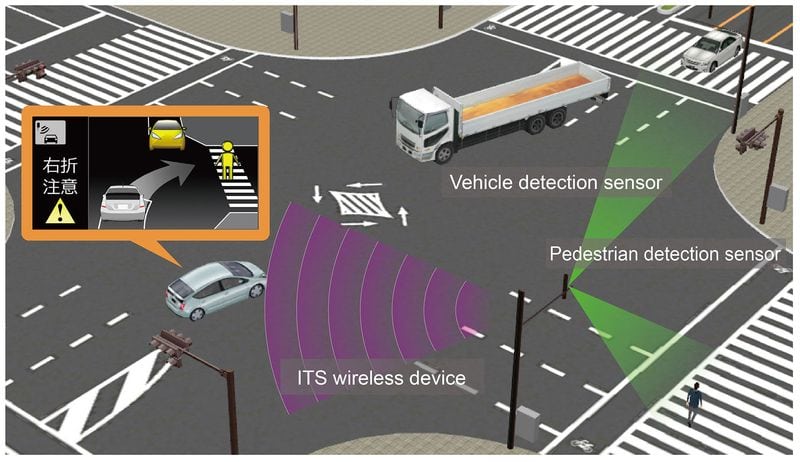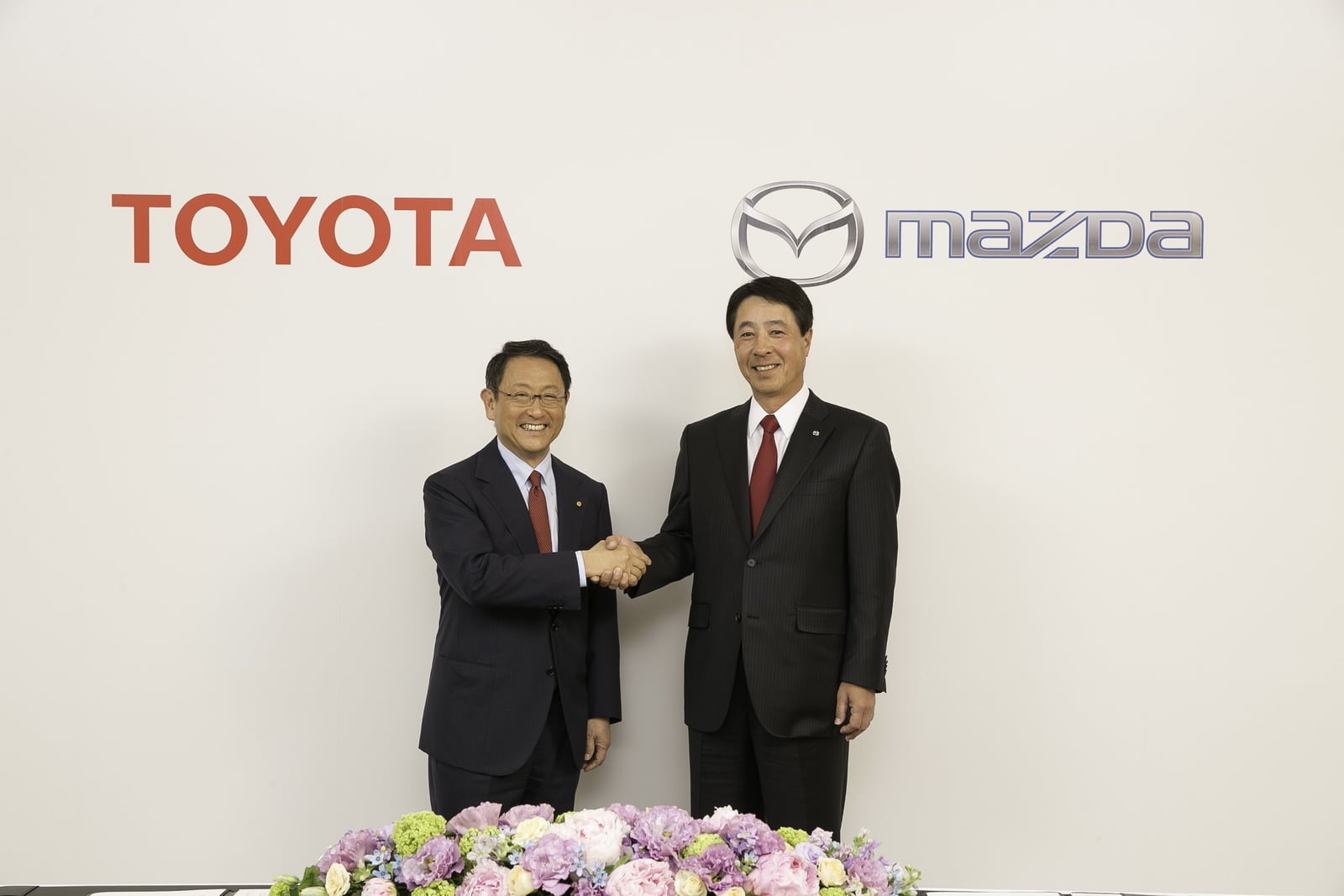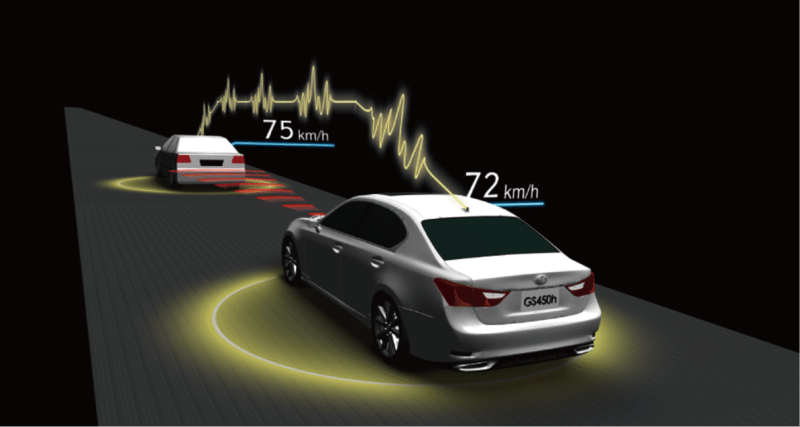Some of Toyota’s new cars next year will have compatability with advanced vehicle-infrastructure cooperative systems that use wireless frequency reserved for Intelligent Transport Systems in Japan. This will be part of the optional Toyota Safety Sense P active safety package to be made available on select new models in Japan.
The dedicated frequency for ITS is used for road-to-vehicle and vehicle-to-vehicle communication (collectively referred to as vehicle-infrastructure). The systems interact to give one another shared information about the roadway, traffic, hazards, etc. One scenario would be at a difficult intersection where visibility is an issue; infrastructure around the intersection can give vehicles entering it information about other vehicles and obstacles to trigger active safety should things be about to collide.
Toyota will also be implementing a new cruise control system. Communicating Radar Cruise Control uses Toyota’s existing forward-facing millimeter-wave radar to detect inter-vehicular distances and relative speeds. The addition of acceleration and deceleration information from preceding vehicles (obtained via vehicle-to-vehicle communication) significantly enhances tracking performance. In addition to making highway driving safer, this helps reduce traffic congestion and enables more fuel-efficient driving.
The Toyota systems are part of a larger Japanese effort to build vehicle-infrastructure systems with a standardized protocol for cooperation. The Japanese government is working with private companies like Toyota, Honda, and others on the initiative. Toyota will be the first automaker to offer some of these systems commercially.









